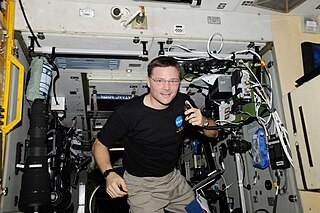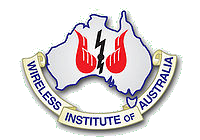
The International Amateur Radio Union (IARU) is an international confederation of national organisations that allows a forum for common matters of concern to amateur radio operators worldwide, and collectively represents matters to the International Telecommunication Union (ITU). The International Amateur Radio Union was founded in 1925 and, as of July 2021, it is composed of 172 national member societies.

Field Day is an annual amateur radio contest, widely sponsored by IARU regions and member organizations, encouraging emergency communications preparedness among amateur radio operators. In the United States, it is typically the largest single emergency preparedness exercise in the country, with over 30,000 operators participating each year. Field Day is always the fourth full weekend of June, beginning at 18:00 UTC Saturday and running through 20:59 UTC Sunday.

The 60-meter band or 5 MHz band is a relatively new amateur radio allocation, first introduced in 2002, that was originally only available in a few countries, such as the United States, United Kingdom, Norway, Finland, Denmark, Ireland and Iceland. Over a number of years however, an increasing proportion of countries' telecommunications administrations – together with their government and military users – have permitted Amateur Radio operation in the 5 MHz area on a short or longer-term basis, ranging from discrete channels to a frequency band allocation.
In broadcasting and radio communications, a call sign is a unique identifier for a transmitter station. A call sign can be formally assigned by a government agency, informally adopted by individuals or organizations, or even cryptographically encoded to disguise a station's identity.
The New Zealand Association of Radio Transmitters (NZART) is a non-profit organisation of amateur radio enthusiasts in New Zealand. It represents New Zealand amateur radio operators nationally and internationally. NZART is a founding member of the International Amateur Radio Union. It is an association of individual members, however those members are encouraged to form local branches.

An amateur radio operator is someone who uses equipment at an amateur radio station to engage in two-way personal communications with other amateur operators on radio frequencies assigned to the amateur radio service. Amateur radio operators have been granted an amateur radio license by a governmental regulatory authority after passing an examination on applicable regulations, electronics, radio theory, and radio operation. As a component of their license, amateur radio operators are assigned a call sign that they use to identify themselves during communication. About three million amateur radio operators are currently active worldwide.
94.7 The Pulse, is a community radio station which broadcasts to the region of Geelong, Victoria, Australia.
The 2200-meter or 136 kHz band is the lowest frequency band in which amateur radio operators are licensed to transmit. It was formally allocated to amateurs at the 2007 World Radiocommunication Conference (WRC-07). The band is available on a secondary basis in all ITU regions with the limitation that amateur stations have maximum radiated power of 1 watt effective isotropic radiated power.
The World Administrative Radio Conference (WARC) bands are three portions of the shortwave radio spectrum used by licensed and/or certified amateur radio operators. They consist of 30 meters (10.1–10.15 MHz), 17 meters (18.068–18.168 MHz), and 12 meters (24.89–24.99 MHz). They were named after the World Administrative Radio Conference, which in 1979 created a worldwide allocation of these bands for amateur use. The bands were opened for use in the early 1980s. Due to their relatively small bandwidth of 100 kHz or less, there is a gentlemen's agreement that the WARC bands may not be used for general contesting. This agreement has been codified in official recommendations, such as the IARU Region 1 HF Manager's Handbook, which states: "Contest activity shall not take place on the 5, 10, 18 and 24 MHz bands."
Amateur radio or ham radio is practised by more than 22,000 licensed users in India. The first amateur radio operator was licensed in 1921, and by the mid-1930s, there were around 20 amateur radio operators in India. Amateur radio operators played an important part in the Indian independence movement with the establishment of illegal pro-independence radio stations in the 1940s. The three decades after India's independence saw only slow growth in the number of operators until the then Prime Minister of India and amateur radio operator, Rajiv Gandhi (VU2RG), waived the import duty on wireless equipment in 1984. Since then, numbers have picked up, and as of 2007, there were more than 16,000 operators in the country. Amateur radio operators have played a vital role during disasters and national emergencies such as earthquakes, tsunamis, cyclones, floods, and bomb blasts, by providing voluntary emergency communications in the affected areas.
Call signs in Australia are allocated by the Australian Communications and Media Authority and are unique for each broadcast station. The use of callsigns on-air in both radio and television in Australia is optional, so many stations used other on-air identifications. Australian broadcast stations officially have the prefix VL- and originally all callsigns used that format, but since Australia has no nearby neighbours, this prefix is no longer used except in an international context.

Trinity Christian School, founded in 1980, is a private Christian P-12 school located in Wanniassa in the Tuggeranong Valley of Canberra, ACT, Australia.
The Irish Radio Transmitters Society (IRTS) is a national non-profit organization for amateur radio enthusiasts in Ireland. Key missions of the IRTS include promoting amateur radio experimentation and representing the interests of Irish amateur radio operators before Irish and international telecommunications regulatory authorities. In particular, since 2005 in agreement with Communications Regulator (Comreg), the IRTS supports the entire examination process for the Experimenter's Licence including setting, organising, and correcting examinations for the Irish amateur radio license. The organization has no paid employees, and all tasks are performed by volunteers. IRTS is the national member society representing Ireland in the International Amateur Radio Union.

Amateur radio, also known as ham radio, is the use of the radio frequency spectrum for purposes of non-commercial exchange of messages, wireless experimentation, self-training, private recreation, radiosport, contesting, and emergency communications. The term "amateur" is used to specify "a duly authorized person interested in radioelectric practice with a purely personal aim and without pecuniary interest"; and to differentiate it from commercial broadcasting, public safety, or professional two-way radio services.
Mount Helen FM was a community radio station, serving the Hunter Valley and Liverpool Plains areas of New South Wales. It operated studios in Willow Tree and Muswellbrook, and operated from transmitters serving both areas.
In Australia, amateur radio licensing is governed by the Australian Communications and Media Authority (ACMA) under federal regulations. Licences to operate amateur stations are granted to individuals of any age after they demonstrate a knowledge of the appropriate Amateur Operator's Certificate of Proficiency syllabus for their licence grade. Operator's licences are divided into different classes, and offer different operating privileges in accordance with the increasing knowledge required per licence class. Over time these classes and their knowledge requirements have changed and there now remain three different classes.

The Luxembourg Amateur Radio Union (LARU) is a national non-profit organization for amateur radio enthusiasts in Luxembourg . The LARU was founded on January 1, 2014. The LARU promotes technical progress and cohesion of amateur radio operators. The LARU sets priorities in emergency communications, digital voice communications, digital data transmission, science and education.
Call signs in United Kingdom include a three letter country code, and a series of letters and numbers.
Broadcast call signs are call signs assigned as unique identifiers to radio stations and television stations. While broadcast radio stations will often brand themselves with plain-text names, identities such as "cool FM", "rock 105" or "the ABC network" are not globally unique. Another station in another city or country may have a similar brand, and the name of a broadcast station for legal purposes is normally its internationally recognised ITU call sign. Some common conventions are followed around the world.

Commercial Radio Australia (CRA) is the peak body for the commercial radio broadcasting industry in Australia. CRA was formed in 1930 as the Federation of Australian Radio Broadcasters.









